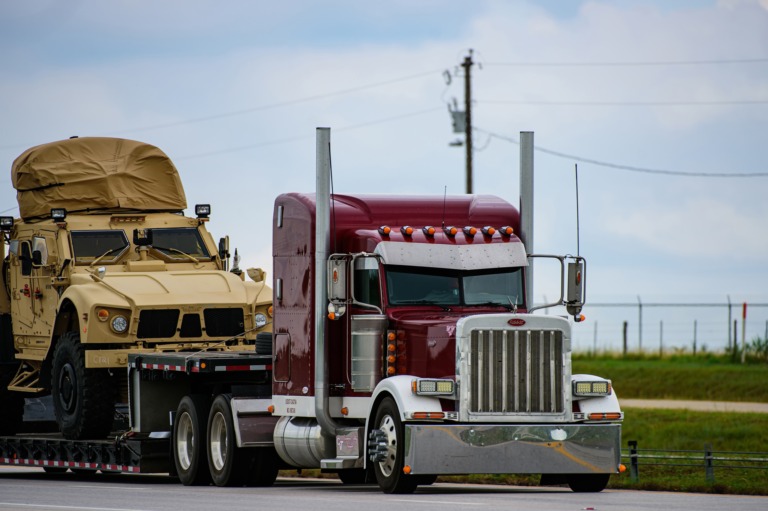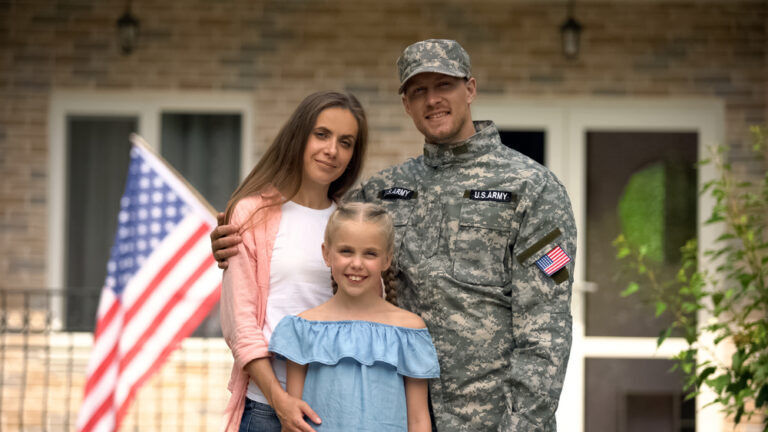Discover the ultimate guide to mastering military PPM moves with our detailed insights. This comprehensive resource delves into the best practices for military Personal Procured Moves (PPM), tailored to meet the unique needs of service members and their families.
Whether you’re a seasoned military mover or facing your first relocation, our guide offers invaluable advice and strategies to navigate the complexities of PPM. Learn how to streamline your move, maximize your entitlements, and ensure a smooth, stress-free transition in every aspect of your military move.
Key Takeaways
- PPM moves offer flexibility and potential cost savings for military families.
- Thorough planning, understanding of policies, and organization are crucial for a successful PPM move.
- Military reimbursements play a key role in offsetting moving expenses.
- Time management and budgeting are essential components of the moving process.
- Knowledge of military-specific resources and support can greatly ease the moving experience.
Understanding Personal Procured Moves (PPM)
Personal Procured Moves (PPM), formerly known as Do-It-Yourself (DITY) moves, offer military personnel an alternative to traditional government-arranged relocations. In a personally procured move (PPM), the service member is responsible for organizing and executing the move to their new duty station, giving them greater control over the process.
This option allows for more flexibility in choosing moving dates, methods, and companies, and can be particularly beneficial for those with specific moving needs or schedules. Additionally, PPMs can be financially advantageous as the military reimburses a portion of the estimated cost it would have paid for a government-arranged move.
One of the key aspects of a PPM is the empowerment it gives to service members. They can tailor the move to their personal circumstances, selecting the services that best fit their situation. This flexibility is a significant advantage, especially for those with families, special needs, or unique timelines.
However, this increased control also comes with the responsibility of managing every detail of the move, from packing and shipping to handling expenses and filing for reimbursements.
Benefits of Choosing PPM for Military Relocations
Choosing a Personal Procured Move (PPM) for military relocations offers several benefits. At its core, it provides more autonomy over the moving process, allowing service members to make decisions that best suit their individual needs and preferences. This personalized approach can lead to a more satisfying moving experience.
Benefits of PPM include:
- Flexibility in Timing: You can schedule your move according to your convenience, fitting it around your family’s schedule and other commitments.
- Choice of Movers: You have the liberty to select moving companies based on your preferences, budget, and research.
- Cost Control: Potentially save money by managing the move efficiently and possibly profiting from the allowance if the move costs less than the government’s reimbursement rate.
- Greater Involvement: Having direct control over packing and handling of belongings can lead to more careful and personalized handling of items.
Key Steps in Planning Your Military PPM Move
Planning a Personal Procured Move (PPM) involves several crucial steps to ensure a smooth and efficient relocation process. This begins with understanding the full scope of the move and extends to meticulous preparation and organization.
- Understanding Military Moving Policies: Familiarize yourself with the military’s rules and requirements for PPM moves.
- Choosing the Right Moving Services: Research and select moving services, including commercial moving companies and rental truck options, that align with your needs and budget.
- Packing and Organizing: Efficiently pack your belongings, keeping track of inventory and essential documents.
- Managing Logistics: Plan the logistics of the move, including transportation, travel arrangements, and accommodation if needed.
Setting a Realistic Timeline
Setting a realistic timeline is vital in planning a successful Personal Procured Move (PPM). This involves considering all aspects of the move, from preparation to the actual moving day and settling in the new location.
Key timeline considerations include:
- Pre-Move Preparations: Allow ample time for sorting, decluttering, and packing your belongings. Start at least a month in advance for a stress-free process.
- Moving Day: Decide on a moving date that aligns with your schedule and the availability of moving services.
- Post-Move Activities: Factor in time for unpacking and setting up your new home, as well as completing reimbursement processes.
Budgeting for Your PPM Move
Budgeting effectively for a PPM move requires careful planning and consideration of all potential costs. This involves estimating the costs of moving services, packing materials, transportation, and any additional expenses like storage or insurance. It’s important to be thorough and realistic in this estimation to avoid financial strain.
Additionally, it’s wise to set aside a contingency fund for unexpected expenses. This fund can cover any unforeseen costs that arise during the moving process, ensuring that your budget remains intact and the move progresses smoothly.
Understanding Military Reimbursement Policies
Understanding military reimbursement policies is essential for a successful PPM move. These policies dictate how much you can be reimbursed for your moving expenses. The reimbursement rate is typically based on the weight of your goods and the distance of your move.
It’s important to familiarize yourself with the specific documentation required to claim your reimbursement. This may include weight tickets, receipts, and other proofs of moving expenses. Submitting the proper paperwork in a timely manner is crucial to receiving the full reimbursement you are entitled to.
Choosing the Right Moving Services for Military PPM
Selecting the right moving services for a Military Personal Procured Move (PPM) is crucial. It involves balancing cost, reliability, and services offered to meet your specific moving needs.
- Researching Options: Investigate various moving companies, including options for a moving truck or a partial dity move, focusing on those experienced in military relocations.
- Comparing Services and Costs: Look at the range of services offered and how they align with your budget.
- Checking for Military-Friendly Policies: Some movers offer special discounts or services tailored to military families.
- Reading Reviews and Feedback: Learn from the experiences of other military families to gauge reliability and customer service.
Evaluating Moving Companies for Military Moves
When evaluating moving companies for a military PPM, it’s important to consider several factors to ensure you choose a reliable and efficient service provider.
- Reputation and Experience: Check the company’s track record in handling military moves.
- Licensing and Insurance: Ensure the company is licensed and offers adequate insurance for your belongings.
- Military Discounts and Offers: Look for companies that provide special offers or discounts for military personnel.
- Customer Service: Assess the quality of customer service, including responsiveness and willingness to accommodate specific needs.
Considering DIY Moving Options
For those considering a DIY approach to their military PPM, it’s important to weigh the potential savings against the effort and logistics involved.
Factors to consider:
- Rental Equipment: Research the cost and availability of rental trucks and moving equipment.
- Personal Time and Effort: Consider the time and physical effort required to pack, load, and transport your household goods in a dity move scenario.
- Risk and Responsibility: Understand the risks involved, including damage to belongings and potential injuries.
- Support Network: Assess the availability of friends or family who can assist with the move.
Utilizing Military-Specific Moving Resources
Military-specific moving resources are invaluable for service members undertaking a PPM. These resources are designed to address the unique challenges of military relocations and offer specialized support and information. They can include access to moving calculators, guides on military moving procedures, and contacts for military support services.
Another key aspect of these resources is the provision of information on entitlements and reimbursements specific to military moves. This can include details on weight allowances, travel reimbursements, and temporary lodging expenses. Utilizing these resources ensures that service members are well-informed and can make the most out of their entitlements and benefits during the move.
Packing Strategies for Military PPM Moves
Effective packing is a cornerstone of a successful military PPM move. It involves organization, careful planning, and attention to detail.
- Starting Early: Begin packing well in advance to avoid last-minute rushes.
- Categorizing Items: Organize belongings by room, type, or priority for easier unpacking.
- Using Quality Packing Materials: Invest in sturdy boxes, bubble wrap, and packing tape to protect your belongings.
- Labeling Clearly: Label each box with its contents and the destination room in the new home.
Organizing and Labeling Your Belongings
Organization and labeling are key to a smooth PPM move. By categorizing and labeling your belongings, you can ensure that unpacking and settling into your new home is efficient and stress-free. This process also helps in keeping track of your items, making it easier to notice if anything goes missing.
Labeling should be clear and comprehensive. Use a consistent system throughout your packing – for instance, you might label boxes with the room they belong to and a brief description of contents. Consider also marking boxes that contain fragile items or those that need to be unpacked first.
Special Packing Considerations for Overseas Moves
Overseas moves come with additional challenges, requiring specific packing considerations to ensure the safety and security of your belongings.
- Climate and Travel Duration: Pack with the destination’s climate and the transit time in mind.
- Legal and Customs Regulations: Be aware of items that are restricted or require special documentation.
- Extra Protection: Use additional padding and waterproofing for items that might be exposed to variable conditions.
Safe Packing Tips for Fragile and Valuable Items
Packing fragile and valuable items demands extra care and attention to ensure they are transported safely.
- Using Specialized Containers: Invest in sturdy boxes and specialty containers for delicate items.
- Secure Wrapping: Wrap fragile items individually with bubble wrap or packing paper.
- Proper Cushioning: Use packing peanuts or towels for additional padding in the boxes.
- Label as Fragile: Clearly mark boxes containing delicate items to alert movers to handle them with care.
Navigating Logistics and Documentation
Navigating the logistics and documentation for a Military Personal Procured Move (PPM) can be complex but is essential for a smooth transition. This process involves not only the physical moving of belongings but also ensuring that all necessary paperwork is accurately completed and submitted.
Proper documentation is key to receiving reimbursements and keeping track of your move. Additionally, understanding and managing the logistical aspects, such as transportation routes, timing, and coordination with various parties, are critical to avoiding unnecessary complications.
Efficient handling of these elements requires organization and attention to detail. It’s important to familiarize yourself with the specific requirements and deadlines set by the military for PPM moves. Keeping a checklist and a folder for all moving-related documents can be incredibly helpful in staying organized and ensuring nothing is overlooked.
Completing Required Military Paperwork for PPM
Completing the required military paperwork for a PPM is a crucial step in the moving process. This paperwork often includes detailed documentation of your belongings, proof of expenses, and official forms provided by the military. Accurate and timely completion of these forms is necessary for reimbursement and for official records of the move.
It’s advisable to start this process early and to carefully read all instructions provided by the military. Ensure you understand what forms are required and the deadlines for submission. Keeping copies of all submitted paperwork is also essential in case of any discrepancies or queries from the military.
Tracking Expenses for Reimbursement
Tracking expenses meticulously is vital for reimbursement in a PPM move. This requires keeping a detailed record of all moving-related expenditures.
- Maintain Receipts: Keep all receipts related to moving expenses, including transportation, packing supplies, and professional services.
- Record Mileage: If driving your vehicle, keep a log of mileage for fuel reimbursement.
- Categorize Expenses: Organize expenses into categories for easier processing and filing.
- Use a Tracking System: Consider using a spreadsheet or app to keep an organized record of all costs.
Making the Most of Your PPM Move
Entitlements Maximizing your PPM move entitlements involves understanding what you are eligible for and how to claim it effectively.
- Research Entitlements: Familiarize yourself with the entitlements available for your specific move.
- File Claims Promptly: Submit reimbursement claims as soon as possible after the move.
- Understand Weight Tickets: Know the importance of weight tickets for calculating reimbursements.
- Seek Advice if Needed: Don’t hesitate to seek guidance from military move coordinators or financial advisors.
Understanding Weight Allowances and Restrictions
Weight allowances and restrictions are a significant aspect of military PPM moves. The military sets specific weight limits based on rank and family status, which dictate the amount of goods you can move at the government’s expense. Exceeding these limits can result in out-of-pocket expenses, so it’s crucial to understand and adhere to these restrictions.
Before the move, it’s advisable to get an estimate of the weight of your belongings. This can be done through a pre-move survey or by using weight estimation tools provided by the military. Keeping your shipment within the allowed weight limit not only avoids additional costs but also ensures a smoother processing of your reimbursement claims.
Tips for Efficient Expense Management
Efficient expense management is key to a stress-free PPM move.
- Create a Budget: Establish a clear budget for the move and stick to it.
- Prioritize Spending: Allocate funds to essential moving services first.
- Seek Cost-Effective Options: Look for ways to reduce costs without compromising the safety and quality of the move.
Tips for a Successful Move Day
Ensuring a successful move day involves careful planning and preparation.
- Early Start: Begin the day early to maximize time for loading and transportation.
- Clear Communication: Maintain open communication with anyone assisting in the move.
- Emergency Kit: Have a kit with essentials like tools, snacks, and important documents.
Final Checklist Before Moving Day
A final checklist can ensure that nothing is overlooked on a moving day.
- Verify Inventory: Ensure all items are accounted for and ready to move.
- Confirm Travel Arrangements: Double-check your travel plans and accommodations.
- Check Moving Services: Confirm the arrival time and details with your moving company or helpers.
Handling Unexpected Challenges on Moving Day
Moving day can present unforeseen challenges that require quick thinking and flexibility.
To handle these challenges:
- Plan for Delays: Allow extra time in your schedule for unexpected delays.
- Emergency Contacts: Have a list of emergency contacts, including your moving company and roadside assistance.
- Adaptability: Be prepared to adapt plans as needed to address any unforeseen issues.
Ensuring Safe Transportation of Belongings
Ensuring the safe transportation of your belongings is a priority during a PPM move. This involves proper packing, securing items in the moving vehicle, and being mindful of the conditions your belongings will be exposed to during transit. Careful loading of the moving vehicle is crucial. Heavier items should be placed at the bottom to prevent shifting and damage.
Delicate items should be secured and cushioned. If using a moving company, it’s important to discuss how they plan to protect your items during transportation. Finally, if you’re driving a long distance, plan your route considering factors like weather and road conditions to ensure the safe arrival of your belongings.
How Military Movers Can Assist in Your PPM?
Military Movers can significantly ease the complexities of a Personal Procured Move (PPM), providing expertise and support tailored to the needs of military families. Our services are designed to make your move efficient, stress-free, and compliant with military regulations.
- Expert Packing and Unpacking Services: We provide professional packing and unpacking, ensuring the safety of your belongings.
- Customizable Moving Plans: Tailored moving plans that fit your specific timeline, budget, and requirements.
- Advanced Tracking Technology: Utilize our advanced satellite tracking technology to keep tabs on your shipment in real time.
- Comprehensive Logistics Support: We handle all logistics, from planning routes to managing transportation, easing your burden.
- Military-Specific Guidance: Our team offers guidance on military paperwork and reimbursement processes, ensuring you’re fully informed and compliant.
Conclusion
As we conclude this guide on best practices for military PPM moves, it’s clear that proper planning, understanding of military regulations, and efficient execution are key to a successful relocation. Military Movers stands ready to assist you in this journey, offering expert services that cater to the unique needs of military families.
Whether you’re moving locally, long-distance, or even overseas, our team is committed to providing a seamless, stress-free moving experience. If you’re planning a military PPM move and need reliable, professional assistance, contact Military Movers today. Let us help you make your move as smooth and efficient as possible. Reach out for a free, no-obligation quote and embark on your next adventure with confidence and peace of mind.
FAQs
A PPM allows military members to handle their relocation personally, offering more control and potential reimbursement from the government for moving expenses.
Reimbursement is typically based on the weight of your belongings and the distance of your move. You’ll need to submit weight tickets and other required documentation to the military.
Yes, Military Movers offers services for overseas relocations, ensuring compliance with international moving regulations and providing support every step of the way.
Document the damage and contact your moving company or insurance provider. For military-specific claims, you may need to follow additional procedures outlined by the military.
Yes, packing for a military PPM move involves careful planning, especially for overseas moves. It’s important to consider climate, transportation duration, and customs regulations.




